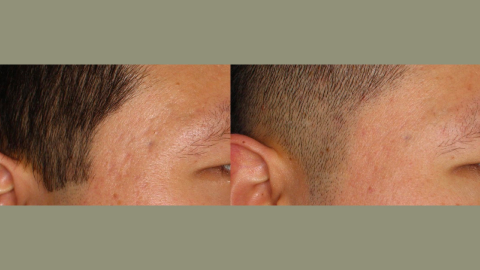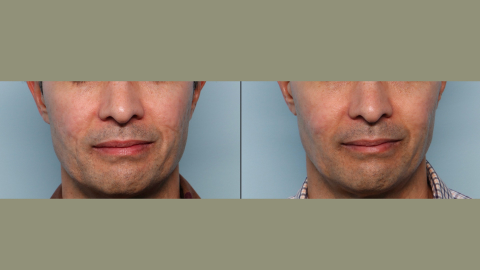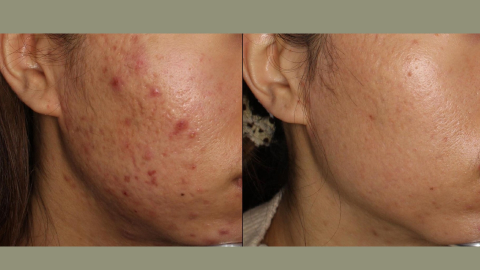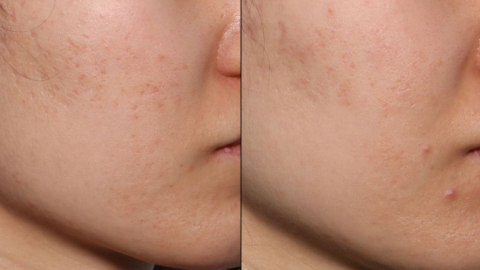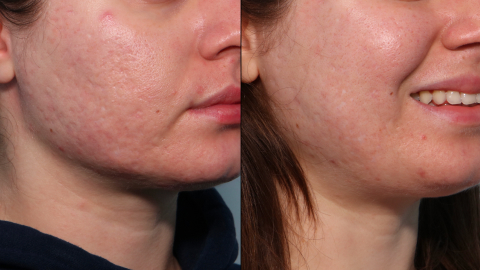Acne Scars
What are acne scars?
When acne is moderate or severe, the skin may heal with scars. Once acne is resolved or treated, marks or scars may remain behind that can be readily treated. In general, a regimen or treatment that will keep acne under control is recommended prior to starting acne scar treatment.
What treatments are available for this condition?
There are many treatments for acne scars. Selecting the right treatment requires a diagnosis of the type of scar involved, as well as an understanding of background skin and ability for social downtime after a procedure. In general, multiple treatments are required to reach a 50% improvement in the appearance of scars.
Thick (hypertrophic) scars: Scar injection and ablative lasers can be used.
Red scars: Vascular laser is useful to treat red scars.
Brown (hyperpigmented) scars: These scars are very challenging to treat. Fractional picosecond laser can be considered in this scenario.
Depressed (atrophic) scars: Depressed scars are further differentiated into ice-pick scars (1-2 mm, deep), boxcar scars (appear punched-out, with edges) and rolled (appear like shadows).
- Ice-pick scars are challenging to treat. CROSS technique is often used, as can a punch excision.
- Boxcar scars are well-suited for Fractional laser resurfacing and ablative laser resurfacing. A procedure called subcision can also boost the effects of these lasers.
- Rolling scars carry more treatment options. Dermal fillers and biostimulators can be used to replenish the soft tissue under the scar. Fractional laser resurfacing and ablative laser resurfacing with or without subcision can also help these scars significantly.
White (hypopigmented) scars: White scars are arguably the hardest to treat – several treatments of fractional laser resurfacing combined with topicals can slowly help.


